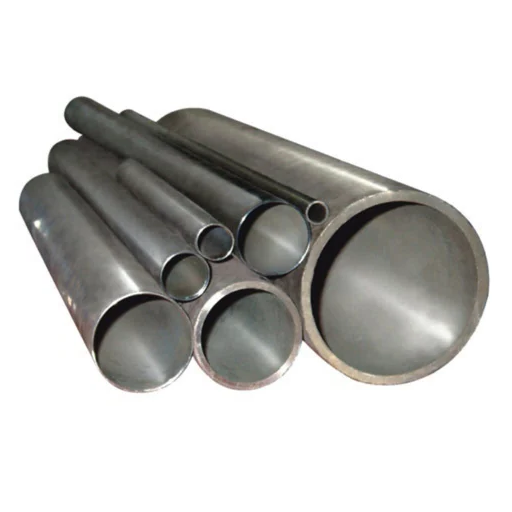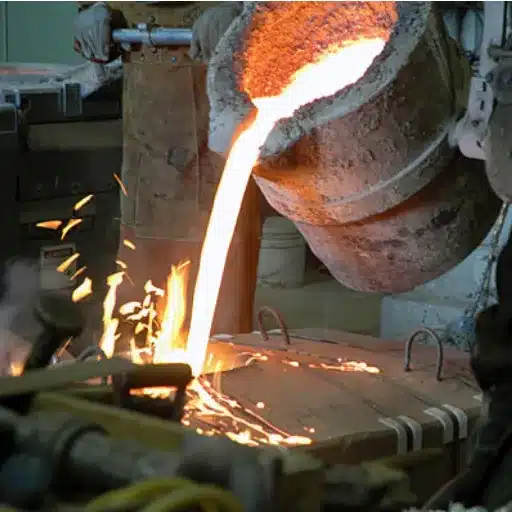Stainless steel seamless pipes are a critical component in numerous industrial applications, renowned for their durability, strength, and resistance to corrosion. But what exactly makes them indispensable in modern engineering and manufacturing processes? This comprehensive guide is designed to explore the unique characteristics and advantages of stainless steel seamless pipes, from their superior structural integrity to their unparalleled versatility. Whether you work in construction, energy, or manufacturing, understanding the benefits of these robust pipes is essential for optimizing performance and ensuring long-term reliability in your projects. Read on to discover why stainless steel seamless pipes are the preferred choice across a wide range of industries and how they can elevate the efficiency and effectiveness of your operations.
What is a stainless steel seamless pipe?
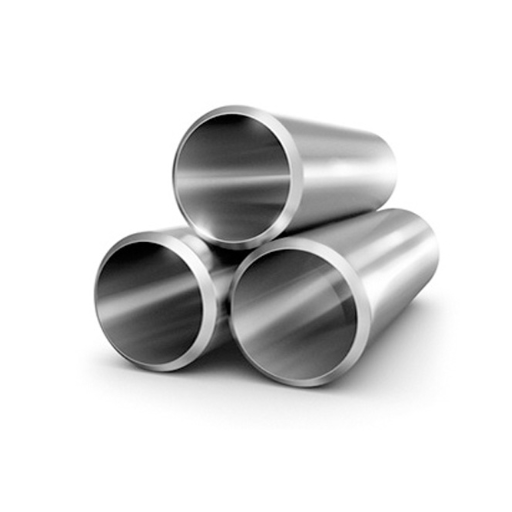
How is a seamless pipe different from a welded pipe?
The manufacturing processes of seamless pipes and welded pipes differ greatly. Their differences impact performance characteristics and allowable applications. The production of seamless pipes is done by extrusion. A solid cylindrical piece of steel called a billet is heated and then pierced to create a hollow tube, or pipe. Subsequently, the process makes a pipe with no joints or seams, which removes weak structural points. This improves the pipe’s strength and ability to withstand high-pressure environments.
Welded pipes, in contrast, are created from flat steel strips that are rolled into a cylinder, with the edges fused using several welding methods, including electric resistance and submerged arc welding. Even though modern welded pipes are of far better quality than in the old days, the seam joint remains an area of weakness in the pipe under high stress or pressure.
The selection of seamless and welded pipes depends on the particular requirements of their application. Seamless pipes are often used within the oil and gas, energy, and chemical processing industries because of their superior strength and ability to withstand extreme conditions. On the other hand, welded pipes are used in applications with lower-pressure demands or where precision is less important. Thus, they are more widely used for water distribution, structural purposes, and general utility services.
What materials are used in manufacturing stainless steel seamless pipes?
Stainless steel seamless pipes are made from different grades of stainless steel, which is an alloy of iron, chromium, and some other elements. The most commonly used grades are 304, 304L, 316, and 316L. These grades are selected based on their particular chemical makeup and how well they withstand different environmental conditions. Chromium is one of the alloying elements added to these pipes. It is present at a minimum of 10.5, and it actively increases the corrosion resistance of these pipes by forming a passive oxide layer on the surface.
Nickel, molybdenum, and manganese are other alloying elements that are added to improve the mechanical properties and other functions of the material. Nickel, for example, improves the ductility and toughness of the material. Molybdenum, on the other hand, improves resistance to pitting and crevice corrosion and is therefore well suited for marine and chemical processing applications. Manganese is primarily added as a stabilizer and serves to improve the strength of the material during its processing.
Various factors, such as application, alongside environmental components like temperature, pressure, and corrosive substance exposure, affect the grade and composition selection of stainless steel. During manufacturing, stringent standards for raw material selection are implemented to ensure the shipped pipes maintain critical strength, durability, and resistance standards. These qualities are crucial for seamless pipes in highly regulated fields like energy, oil and gas, and pharmaceuticals.
What are the advantages of using seamless stainless steel pipes?
Seamless stainless steel pipes provide countless benefits, making their application invaluable in highly sensitive industries. One of their key advantages is increased strength and durability, which comes from having no welded seams, which could become weak points while under pressure or in extreme environments. This makes them especially useful for industries where there is a need to withstand high pressure, such as oil and gas, chemical processes, and energy generation.
Also, oil and gas pipe seamless undergoes harsh environments, like exposure to chemicals or even high temperatures, while maintaining a uniform shape structure, in addition to consistent corrosion resistance. Seamless pipes also offer greater accuracy when it comes to length measurements and even wall thickness throughout the pipe’s entire length, which increases overall reliability when working with precision.
For applications using pure or dangerous materials, there exists a critical need for seamless stainless steel pipes that improve leak prevention thanks to the absence of welds ,which are potential failure points. These characteristics make the pipes useful in the pharmacy and food processing industries. In addition, seamless stainless steel pipes are great at thermal performance and can, therefore, be used in systems that operate at high temperatures, like boilers or heat exchangers.
Lastly, the internal surfaces of seamless pipes are smoother and more homogeneous; hence they perform comparatively better under dynamic loads and stresses. Fluid movement efficiency and lower energy waste are achieved because of these seamless pipes having lower energy losses. These advantages, taken together, are why seamless stainless steel pipes are preferred in industries that have strict standards for quality, safety, and performance.
How to choose the right stainless steel seamless pipe for your project
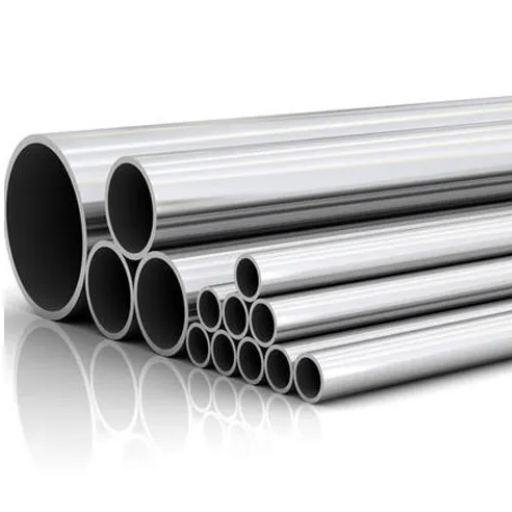
What factors should be considered regarding the pipe size?
When choosing the correct size of stainless steel seamless pipes for a project, several critical technical features need to be analyzed to guarantee satisfactory performance as well as meet project requirements. These features include:
- Nominal Pipe Size (NPS) and Outer Diameter (OD): These two features have a relationship whereby the nominal size acts as a guide towards the diameter, while the outer diameter serves as a critical measurement for compatibility with joining components and fittings.
- Wall Thickness (Schedule): The schedule of the pipes will determine wall thickness, meaning a higher schedule will correspond with a greater value or thickness of internal pressure and mechanical stress that the pipe can withstand.
- Internal Diameter (ID): The internal diameter is very important for gas and fluid transmission as it determines the pressure control. Therefore, maintaining the pipes’ internal dimensions is of utmost importance.
- Length Requirements: Depending on the context of the environment to be installed, either standard lengths (single/random) or tailored lengths are preferred. These have an effect on the time required for installation and material efficiency.
- Tolerance Levels: Rounding and uniformity tolerances have a considerable impact on highly precise operations like in the Aerospace or Medical industries as there is a need for tighter specification.
- Operating Conditions: These include factors such as temperature and pressure ratings, making them relevant for the pipe size since they must perform under stress without operational misalignment.
Making sure these factors and measurements go hand in hand also makes use of an evaluation system which guarantees the life span, safety, and functional proficiency of the selected pipe in highly stressful industrial work settings.
What are the differences between 304 and 316 stainless steel?
Both 304 and 316 stainless steels are widely used and reognized austenitic grades due to their outstanding properties. Their differences, however, comes in the forms of composition, corrosion resistance, and particular applications.
- Chemical Composition: One of the main differences between the two grades is the addition of Molybdenum in 316 stainless steel, which is typically about 2-3%. This addition enhances its performance against corrosion, particularly for chlorides and other chemicals found in industries. On the other hand, 304 stainless steel doesn’t have Molybdenum, making it easier to procure but slightly less robust in conservative environments.
- Corrosion Resistance: 316 stainless steel’s boron content makes it highly resistant to pitting and crevice corrosion in chloride exposed environments. It is often utilized in marine applications, chemical processing, and hot humid places. On the other hand, 304 stainless steel, while having very good overall corrosion resistance, cannot withstand high concentrations of chloride.
- Mechanical Properties: Both 304 and 316 grades come with strong mechanical properties and are equal in regards to tension strength and durability. However, 316 could be marginally better at some high temperature situations due to is greater stability.
- Uses: 304 stainless steel is best suited for general purposes such as kitchen equipment and food processing; it can also be used in non-extreme environments. However, 316 stainless steel is best used in chemical plants, medical appliances, and structures facing seawater due to its high resistance to harsh industrial or coastal conditions.
- Price: 304 SS is less expensive than 316 SS because of the absence of molybdenum and lower nickel quantities. Depending on usage needs, the multi-million dollar decision goes for application demand.
It is critical to distinguish 304 and 316 within the context of environmental exposure, application corrosiveness, and budget. Stainless steels 304 and 316 are durable and versatile, but knowledge of their distinctions enables designers and engineers to optimally tailor performance.
Exploring the specifications and applications of stainless steel seamless pipes
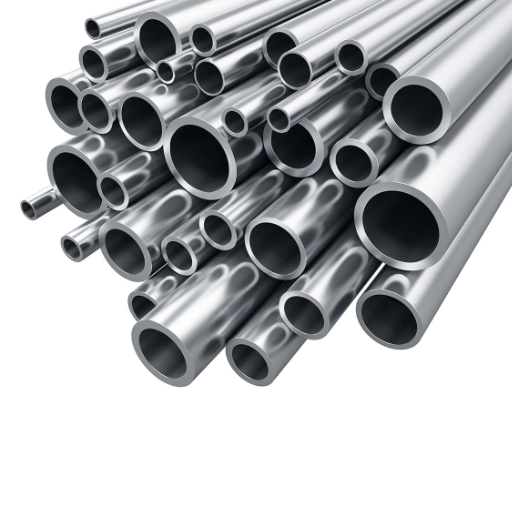
What are the typical applications for these pipes?
The strength, resistance to rust, and ability of stainless steel seamless pipes to endure extreme temperatures and pressures make them useful for different industries. The major applications of seamless pipes include the following:
- Oil and Gas Industry: Seamless pipes are of utmost importance when it comes to the exploration, drilling, and transportation of oil and gas. They are a must for pipelines, refineries, and offshore rigs because of their high-pressure capabilities and resistance to corrosion from hydrocarbons.
- Chemical Processing: The transportation of reactive and corrosive substances is done by seamless pipes in this industry. Infrastructures such as heat exchangers, reactors, and storage tanks are essential, and the 316 stainless steel with molybdenum added makes them resistant to chemicals, thus ideal for these parts.
- Power Generation: Addressing fossil fuel and nuclear power plants, seamless pipes are integral for the heating and cooling equipment, boilers, and steam distribution due to their ability to endure strong pressure and heat.
- Water Treatment Systems: Seamless pipes made from stainless steel are very useful when it comes to desalination and wastewater treatment plants as well as systems dealing with potable water, due to their durability and non-reactive properties.
- Aerospace and Automotive Industries: These industries employ seamless pipes for fuel lines, exhaust systems, and hydraulic systems where weight and strength matter the most.
Choosing the grade of stainless steel to the specific requirements of each application enables industries to enhance the service life and effectiveness of their piping systems while reducing hazards, downtime, and costs.
How do temperature and environment affect the use of these pipes?
An individual seamless pipe’s performance, life span, and safety features are critical in precision and sanitary industries, where factors like temperature and the environment are a product’s conception. Consider expansion due to thermal heating: if the temperature exceeds a certain limit, the material’s expansion may cause stress and deformation over time. This is why stainless steel grades 304 and 316L are so commonplace – they boast exceptional thermal endurance and mechanical stability.
Further posing challenges are corrosive and sustaining environments, especially those with saline waters and aggressive chemicals, or high humid weather. With the aid of duplex or super-austenitic stainless steel pipes, seamless stainless steel pipes have unparalleled corrosion resistance, which is especially critical for these environments. They withstand pitting, crevice corrosion, and stress corrosion cracking under harsh conditions. Moreover, the design of the pipe must consider the environment, where it changes, such as the freeze-thaw cycle, which can break pipes that aren’t designed to handle those stresses.
Engineers can promote optimal pipe performance alongside industry inspection through precisely evaluating operating temperature and the environment with the material selection system geometry. This method, in turn, lessens the maintenance and operational disruptions needed, improving system reliability.
What chemical properties contribute to corrosion resistance?
The material’s chemical composition and molecular structure are the primary factors that influence corrosion resistance. One of the key properties is the presence of a physically stable passive oxide layer, as in stainless steel, which has chromium greater than 10.5%, capable of forming a self-repairing oxide film, thus preventing further oxidation. Molybdenum, nickel, and silicon are also alloying elements which increase resistance by enhancing stability in hostile acidic or saline environments.
Materials that possess low free energy at the metal – oxide interface have higher resistance to corrosion attack and their susceptibility to agents that remove their barriers is lower. Besides, chemical inertness to a chemical attack depends on a material’s electrochemical potential; the metals located upper in the galvanic series, like gold and platinum, resist corrosion since they have the capacity to remain unreactive.
High-performance polymers, especially PTFE, non-metallic materials, possess non-reactive molecular bonds, alongside strong chemical stability even in aggressive environments, providing them with exceptional resistance. Across industries, protective measures against corrosion and other means of ensuring, long-term material integrity begins by customizing specific properties to the given corrosive environment.
Where to source high-quality stainless steel seamless pipes
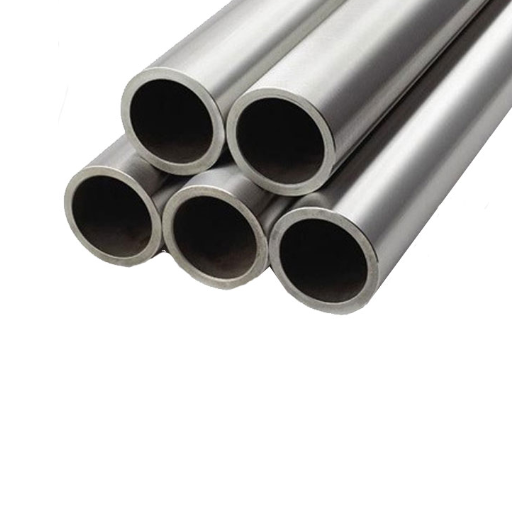
How does certification ensure the quality of stainless steel pipes?
Certification serves as a benchmark for determining the quality, reliability, and stainless steel pipes industry with the accepted standards. For example, ASTM A312, which talks about seamless stainless steel pipes, has clauses for chemical composition, tensile strength, and other relevant tolerances that provide uniformity and consistency.
Since there are technical standards, most certifications also have marking and testing, such as nondestructive testing, where the signed documents show that the pipes will withstand certain pressure or corrosive environment without permanently deforming. This ensures that products can perform the functions they are intended for, even in extremely high or low temperatures or high-pressure conditions.
Also, stainless steel pipes with non-NDT are put with guarantee documents (MTRs), Reports of Mill Tests (MTRs), which have information, take as grades, heat numbers, and certain variables documenting the chemical issued. Such traceability enhances accountability and makes it easy to monitor the standard in sensitive areas like gas and oil, pharmaceuticals, construction, and many more. Using certified materials helps people satisfy their requirements, enables people to lower the risks, enhances reliability, and satisfies requirements with trust documents.
What are the benefits of working with suppliers offering custom-cut options?
Maintaining relationships with suppliers who provide custom options has great operational, financial, and logistical benefits for companies in almost all industries. First, the custom cutting service allows for accurate preparation of materials because order precision eliminates much of the waste and unnecessary additional processing which is usually required in the receiving facility. Such accuracy enhances appropriate resource utilization, improves the efficiency of the automated workflows, and also makes production more streamlined.
Moreover, custom-tailored suppliers can significantly reduce lead time as well. The increased accuracy ensures that all components are received exactly as needed. Thus, all steps, including resizing, re-matching, and any intermediate steps, are eliminated. That is easier and faster than completing the tasks, which improves the time to market considerably. This also allows for better cost efficiency because the businesses do not have to purchase the special cutting equipment or cut back on labor.
From a quality assurance perspective, controlled custom cutting of materials, protecting them from damage, ensures the supply conforms to boundless requirements, which diminishes the risk of deviation that can sully the integrity of projects toward cross-industrial minimalism. Precision critical industries such as aerospace or medical device industries benefit from the high tolerances achieved by suppliers, using advanced technologies. Beyond production, custom-cut simplifies order fulfillment arithmetic.
Finally, custom cutting supports sustainability by minimizing waste. When businesses order precisely what is necessary, it aids in resource preservation and meets green standards while reducing the business’s environmental footprint. Partnering with these types of suppliers reflects an organization’s pledge to sustainable, economical, and environmentally sound business operations.
Maintaining and inspecting stainless steel seamless pipes
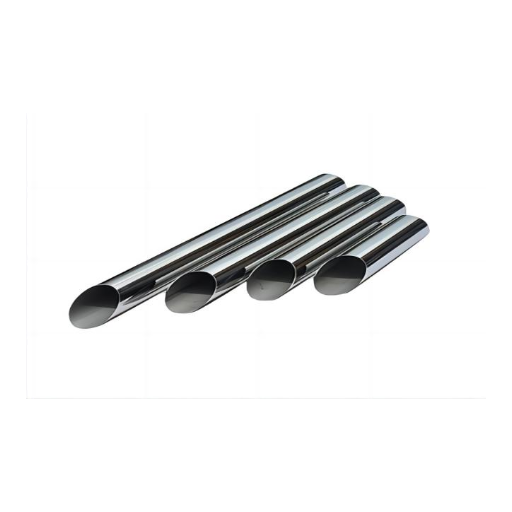
What are the best practices for maintaining these pipes?
In seamless stainless steel pipes, maintenance practices must be observed to protect durability and functionality. First, regular maintenance practices must include cleaning to ensure there is no build-up of industrial residues like dirt, oil, and corrosive materials. Only non-abrasive cleaning implements should be used to safeguard the surface. The use of detergents or grade-specific stainless steel cleaners can yield desired results. Second, carry out periodic inspections aimed at identifying corrosion, wear, or mechanical damage in the form of dents or cracks. Consider performing both visual and ultrasonic tests to offer deeper assessments of the state of the pipe.
Controlling the environment is one of the key factors. Even though stainless steel is resistant to corrosion, they are still susceptible to chloride pitting and crevice rusting. Constricting the situation of exposure of chlorides as well as controlling the flow of air significantly reduce these chances. Further avoid cross contamination which pose greater threats by ensuring that handling equipment, storage spaces, and tools do not carry carbon steel shavings which induce contamination corrosion.
For pipes likely facing high temperatures or aggressive chemicals, checking for thermal fatigue and chemical etching from time to time is advised. Routines integrating these through cleans are essential in maintaining long-term durability and seamless functionality of stainless steel seamless pipes.
How to inspect for quality control and ensure long-term durability?
For stainless steel seamless pipes, effective quality control and assurance of long-term durability require a combination of sophisticated inspection methods, compliance with relevant standards, and maintenance procedures. The approach taken is multi-faceted, as follows.
- Non Destructive Testing: Use non destructive ultrasonic testing (UT) and eddy current testing (ECT) techniques to examine the stem for hidden flaws, cracks, and inclusions to ensure structural integrity is retained. These techniques enable all-inclusive appraisal of the pipe’s condition in real time.
- Dimensional Inspection: Validate the pipe’s dimensions using micrometers and calipers against the ASTM or ISO standards to assess compliance with specified tolerances. Check that the wall thickness, diameter, ovality, and other relevant parameters are within the guidelines.
- Hydrostatic Pressure Testing: Identify the maximum pressure tolerance of the pipe by filling it with water and exerting pressure above the operational limits. This technique is useful for determining potential weak points or leaks that could worsen over time.
- Material Composition Analysis: Use X-ray fluorescence (XRF) spectroscopy and other methods to perform chemical composition analysis to verify the alloy composition. This step aligns the grade of the pipe with the specifications intended for its use.
- Anti-Corrosive Property Testing: Simulated Service Conditions: In performing the testing, the application’s service conditions and corrosive environments should be considered to check the anti-corrosive property of the steel. The corrosion resistance is assessed through certain methods like salt spray and by exposing to different chemicals.
- Surface Check: The internal and external surfaces of the pipes shall be checked visually so as to check for scratches, dents, and weld seams to assure the presence of mechanical uniformity. Modern imaging systems can enhance the detection capability.
- Note all the inspection documents: Traceability requires maintaining up to date records of IoT inspection logs, material certifications and test results providing a structured approach for regulatory and client demand within defined constraining criteria.
Stainless steel seamless pipes can be effectively fortified by these quality control methods of inspection when coupled with maintenance routines. Keeping pace with new inspection methods and standards assures the reliability of these vital elements used in manifold fields.
What role does the environment play in the maintenance of these pipes?
The corrosion-resistant properties of stainless steel seamless pipes, as well as their operational lifespan and maintenance, are influenced by environmental conditions. Factors like humidity, saltwater, industrial pollutants, or extreme weather can lead, even in resistant alloys, to localized corrosion like pitting or crevice corrosion occurring at an accelerated rate. Maritime locations and chemical processing facilities, with high Chloride concentration, have heightened risk, posing the need for the specific grade of stainless steel 316L, which is fortified with extra Molybdenum and thus becomes the ideal material.
Adjustments to maintenance schedules are necessary to mitigate these problems. Maintenance checks for wear and tear, corrosion, or deterioration become greatly important in fraught places under direct and constant abrasive influence. For example, moderately acidic industrial emissions could require far more aggressive cleaning protocols or applying coatings to sunscreen the exposed pipes. Using Corrosion inhibitors and proper drainage systems has proven beneficial maintenance in areas prone to stagnant water, extending pipe lifespan for heavy rain-prone regions.
Real-time chemical concentration sensors and predictive corrosion analytics have advanced environmental monitoring, making precision maintenance possible. Accompanied by a solid comprehension of environmental factors, these strategies help operators mitigate failures and simultaneously optimize maintenance costs.
References
-
Advantages of Stainless Steel Seamless Pipes – This source discusses the key benefits, including greater resistance to pressure and durability.
-
Analysis of the Advantages and Disadvantages of Seamless Pipes – This article provides a balanced view of the advantages, such as corrosion resistance and lightweight properties.
-
A Complete Guide to Stainless Steel Seamless Pipes – This guide offers a comprehensive overview of stainless steel seamless pipes, highlighting their high corrosion resistance and strength.
Frequently Asked Questions (FAQ)
Q: What are the primary benefits of using stainless steel seamless pipes?
A: Stainless steel seamless pipes offer superior corrosion resistance, high strength, and a smooth surface finish. They are ideal for applications requiring high quality and reliability due to their seamless nature, which provides consistent performance and durability.
Q: How does a stainless steel seamless tube differ from a welded tube?
A: A stainless steel seamless tube is manufactured from a solid billet, which is pierced and stretched to form a tube without any weld seams. This process enhances its strength and corrosion resistance compared to welded tubes, which have a seam that may be vulnerable to weaknesses or corrosion.
Q: Why is the inventory of high-quality stainless steel important for suppliers?
A: Maintaining an inventory of high-quality stainless steel allows suppliers to meet immediate customer demands and provide a wide range of options in terms of size, alloy, and specifications. This ensures that clients receive the right product quickly, enhancing customer satisfaction and operational efficiency.
Q: How does the alloy composition affect the performance of stainless steel seamless tubes?
A: The alloy composition determines the stainless steel’s corrosion resistance, strength, and suitability for various environments. Different alloys can enhance specific properties, such as resistance to heat or specific chemicals, making them ideal for specialized applications.
Q: What role does the pipe schedule (sch) play in selecting a stainless steel seamless pipe?
A: The pipe schedule indicates the wall thickness of the pipe, which affects its pressure rating and strength. Selecting the appropriate schedule ensures that the pipe can handle the intended pressure and flow rates in its application, preventing failures and ensuring safety.
Q: What is the importance of thread specifications in seamless stainless steel tubing?
A: Thread specifications ensure that the seamless stainless steel tubing can be correctly connected to other components in a piping system. Proper threading ensures a secure and leak-proof fit, which is crucial for maintaining system integrity and efficiency.
Q: Why is seamless stainless steel tubing preferred for high-pressure applications?
A: Seamless stainless steel tubing is preferred for high-pressure applications because it lacks weld seams, which are potential weak points that can fail under pressure. This seamless construction provides uniform strength and reliability, making it suitable for demanding environments.

